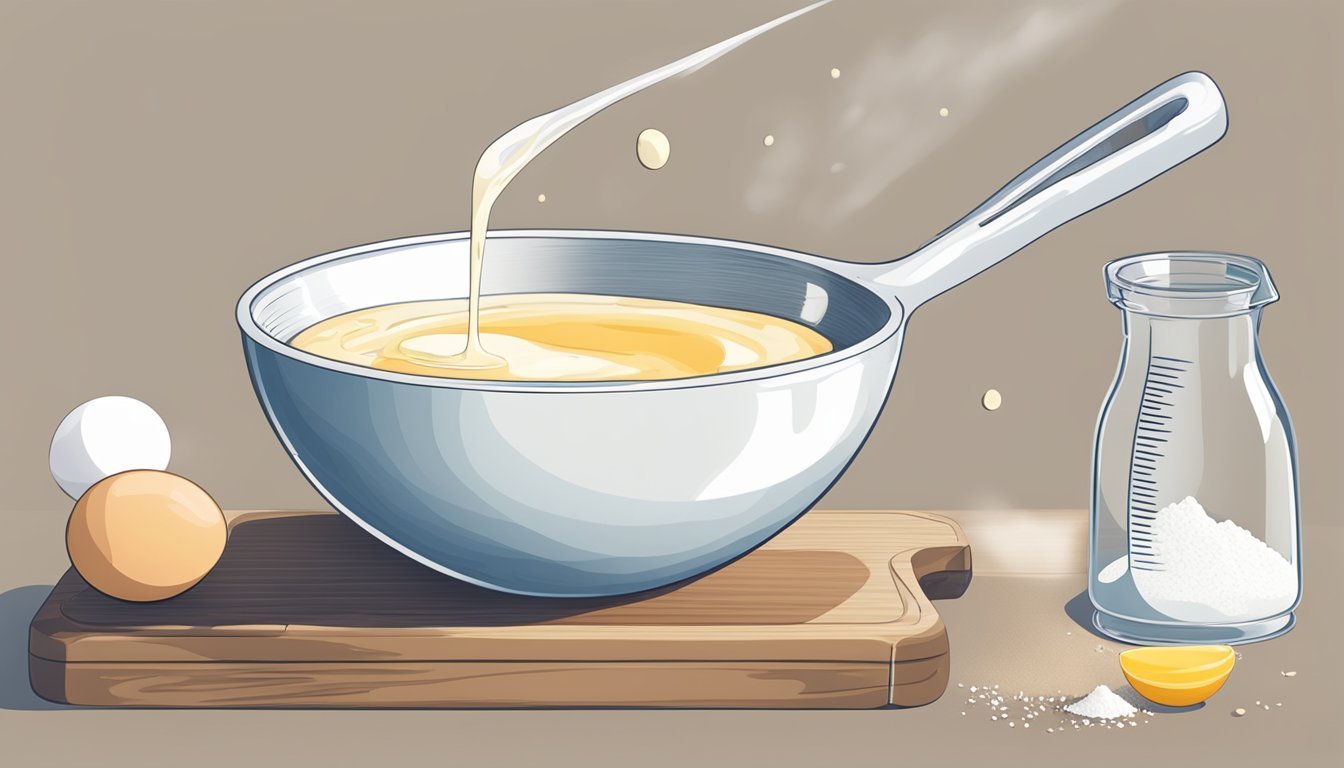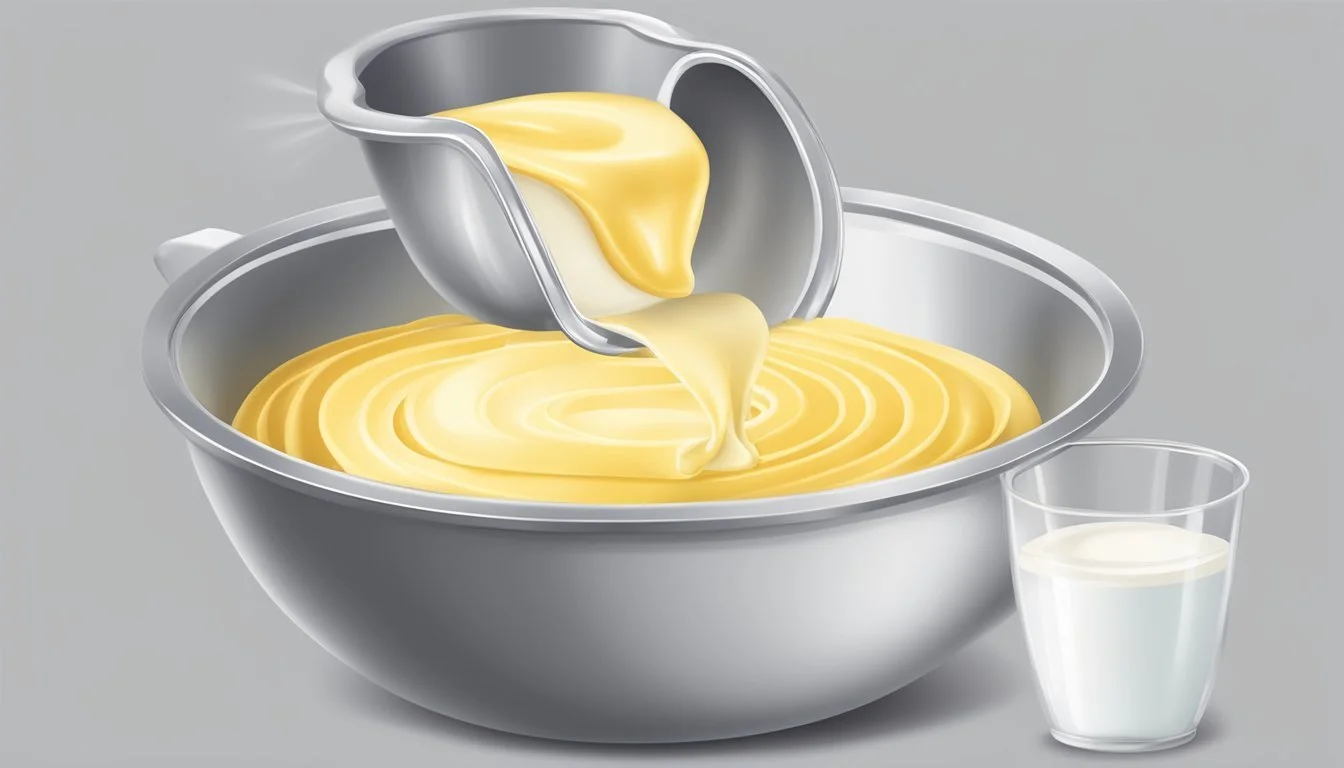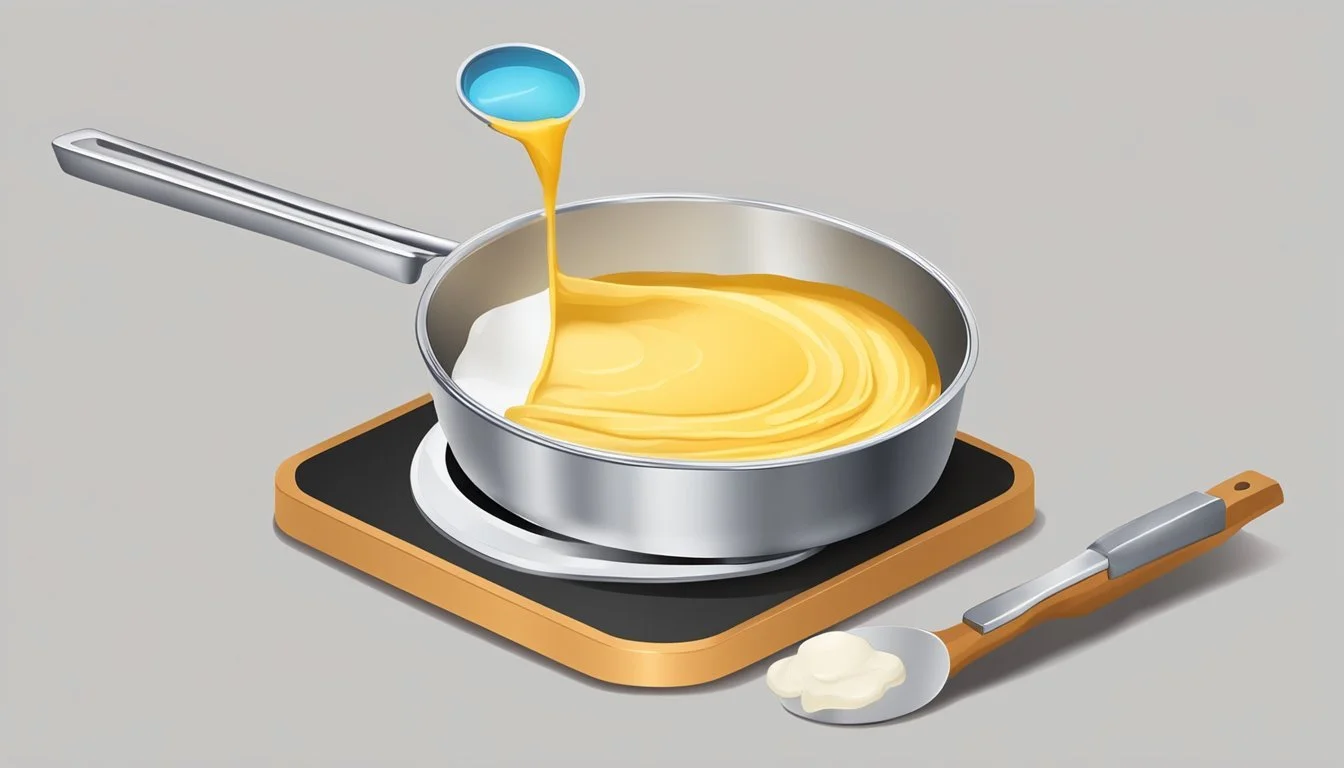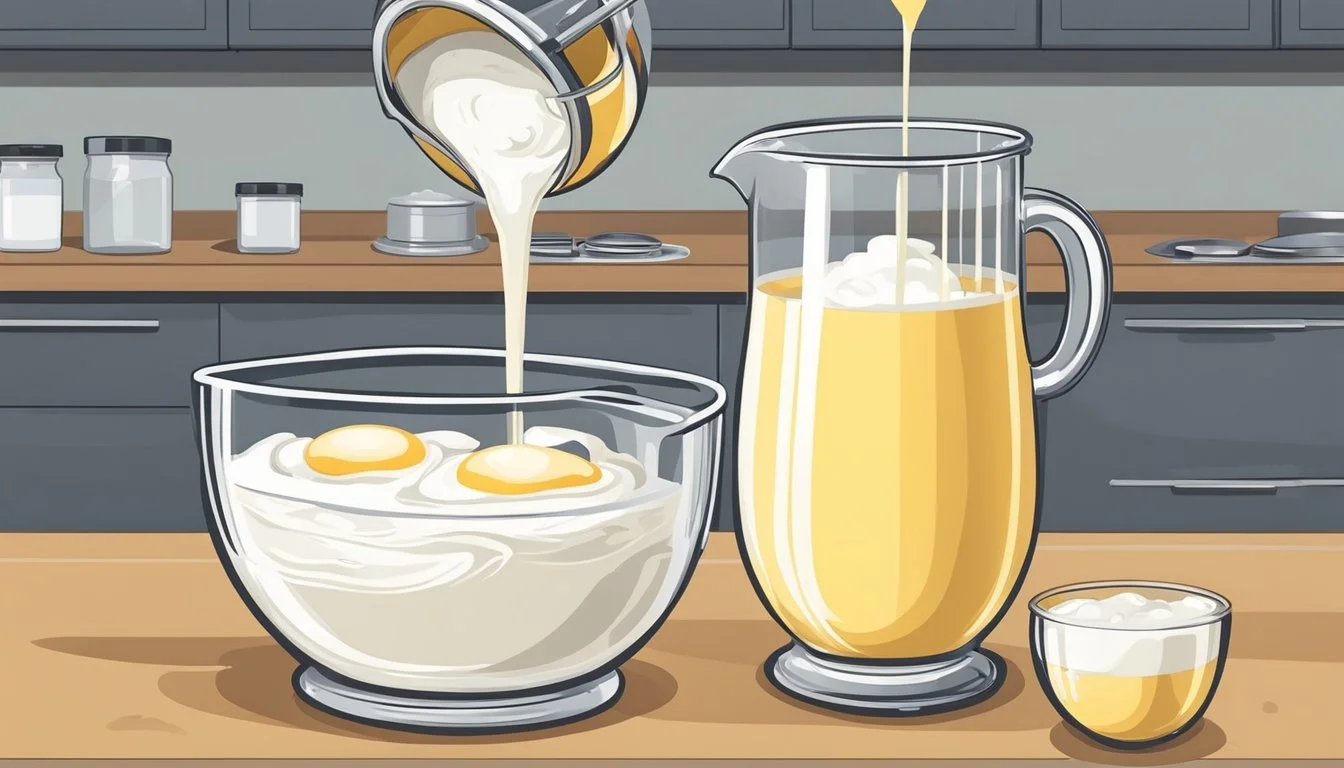How to Measure the Perfect Amount of Liquid for Crepe Batter
Precision Tips for Flawless Consistency
Creating the perfect crepe requires precision and a delicate balance of ingredients. The liquid component of the crepe batter is crucial, as it heavily influences the texture and consistency of the final product. The aim is a batter that is thin enough to spread across the pan, creating the signature thin and delicate crepe, yet not so runny that it fails to hold together when cooked.
Many chefs agree that there's a sweet spot in measuring the liquid for crepe batter, which typically includes milk and can be impacted by the addition of eggs and melted butter. A standard measurement is approximately 1¼ to 1½ cups of milk per cup of flour, complemented by 2-3 eggs for richness. This ratio ensures the batter has enough body to maintain structure while achieving the paper-thin delicacy desired in a perfectly cooked crepe.
Allowing the batter to rest is another step that should not be overlooked; a rest period allows the flour to fully hydrate and the gluten to relax, resulting in a smoother and more cohesive batter. A rest of at least 30 minutes is recommended, although some chefs suggest extending this period to allow the batter to achieve an optimal level of homogeneity. This resting step is just as important as the measurement of the liquid ingredients, highlighting the choreography between precision and patience in the art of crepe making.
Understanding Crepe Batter Ingredients
Creating the perfect crepe batter begins with a clear understanding of the role each ingredient plays. The selection and proportion of ingredients impact the texture, flavor, and consistency of the crepes.
Selecting the Right Milk
Milk is essential in crepe batter for hydration. Whole milk is commonly used because its fat content contributes to a richer taste and tender texture. However, one can substitute with lower-fat milks if desired, adjusting the quantity slightly to achieve the required consistency.
Choosing the Best Flour
The structure of crepes is largely determined by the flour used. All-purpose flour is the standard choice, offering a balance between sufficient gluten for elasticity and tenderness in the final product. For a more delicate crepe, some prefer cake flour, which has a lower protein content and results in a finer texture.
The Role of Eggs in Crepe Batter
Eggs are crucial for binding the batter. Large eggs provide protein and fat, which help to create a smooth, cohesive mixture. The eggs also contribute to the golden color and richness in taste of the crepes upon cooking.
Incorporating Sugar and Salt
A small amount of sugar enhances the subtle sweetness of the crepes, while a pinch of kosher salt complements and balances the flavors. It is not just about taste; the sugar also aids in achieving a pleasing color when the crepes are cooked.
Adding Fats for Texture
Fat, such as unsalted butter, is often included for its flavor and the tender texture it imparts. Saturated fat from butter or even melted butter ensures a soft crumb and can also help prevent sticking during the cooking process.
Enhancing Flavor with Vanilla and Cinnamon
For a nuanced aroma, a dash of vanilla extract can be added to the batter. Additionally, a sprinkle of cinnamon can elevate the overall flavor profile, making the crepes more enticing without being overpowering.
Essential Equipment for Measuring and Mixing
Accurate measurements and proper mixing are vital for the perfect crepe batter. The right tools can greatly enhance the precision and quality of the final product.
Choosing the Right Measuring Tools
For exact measurements, one should use a kitchen scale for dry ingredients and measuring cups or spoons for wet components. Since consistency is key, a volumetric flask or bottle-top dispenser can ensure precise liquid amounts. Liquids should be measured at eye level to confirm accuracy.
Mixing Tools: Whisk Vs. Blender
A whisk is perfect for incorporating air and ensuring a smooth batter, which is essential for delicate crepes. Alternatively, a blender can be used for a quicker and more uniform mix but be mindful not to overmix as it can affect the texture.
Cooking Tools: Crepe Pan or Skillet
A non-stick crepe pan or skillet is crucial for cooking crepes. Non-stick surfaces ensure easy flipping and removal. For even heat distribution, a cast-iron skillet is also a good option, but it needs proper seasoning to prevent sticking.
Using a Ladle for Consistent Portioning
A ladle helps in pouring consistent amounts of batter into the pan. For perfect crepes, using the same amount of batter each time is crucial for uniform thickness and cooking time.
Storing and Separating Crepes
Once cooked, crepes can be stored between layers of parchment paper, wax paper, or plastic wrap to prevent sticking. This ensures they remain intact and fresh, ready for later use or to be served.
Creating the Perfect Batter Consistency
To craft an exceptional crepe batter, precision in liquid measurement is as vital as the balance between ingredients. Consistency is key; it determines the texture and pliability of the final product.
The Importance of Sifting Flour
Sifting the flour before mixing reduces lumps and promotes an even consistency. For the finest crepes, one should ensure the flour is airy and lump-free, which encourages a smoother mixture when liquids are introduced.
Mastering the Milk-to-Flour Ratio
An ideal crepe batter has a liquid-to-flour ratio similar to heavy cream. Typically, this equates to about 1 cup of liquid for every 1 cup of flour; however, adjustments may be necessary based on the type of flour used. The goal is a thin, pourable batter that spreads quickly in a hot pan.
Balancing Wet and Dry Ingredients
To avoid an overly dense or rubbery texture, balance is essential between wet and dry ingredients. Start by creating a paste from the sifted flour and a portion of the milk to prevent lumps, then gradually incorporate the remaining liquid including any fat like melted butter or oil, to enhance flavor and pliability.
Resting Time for Crepe Batter
After mixing, the batter must rest for at least 30 minutes. This pause allows the flour to fully hydrate and the gluten strands to relax, resulting in a more tender and pliable crepe. Resting contributes to the final consistency and texture, making it a non-negotiable step in crepe preparation.
Cooking and Flipping Techniques
Mastering the right cooking and flipping techniques is essential for preparing crepes that are evenly cooked and effortlessly turned. This requires precision in preheating and greasing the pan, pouring the right amount of batter, and flipping with confidence using the appropriate tools.
Preheating and Greasing the Crepe Pan
One should always preheat the crepe pan on medium heat for a few minutes before starting. A properly greased pan ensures that the crepes can be flipped with ease. Apply a light coating of oil using a brush or paper towel to avoid excess grease, which can lead to soggy crepes.
Pouring the Batter and Swirling Technique
For consistent crepe thickness, pour approximately 1/4 cup of batter at the center of the pan. Immediately lift and tilt the pan in a circular motion, swirling the batter to cover the surface evenly. The swirling technique is crucial to achieve the desired thinness of the crepe.
Determining the Perfect Heat Level
Finding the perfect heat level is a balance to ensure that the crepe cooks through without burning. If the pan is too hot, the batter cooks before it can be swirled; too cool, and the crepe will not set properly. Adjust the heat as necessary to find a consistent temperature that works for the batter and pan being used.
Flip with Finesse Using a Spatula
Once the edges of the crepe begin to curl up and the underside is lightly golden, it's time to flip. Using a rubber spatula, gently loosen the edges of the crepe, slide the spatula under the entire crepe, and quickly flip it with confidence. A non-metal spatula is preferred to prevent scratching the pan. Cook the second side until it achieves a light golden color, ensuring a tender crepe with a slightly crisp edge.
Serving and Topping Crepes
A crepe's delight comes not just from its thin, delicate texture but also from its versatile accompaniments. Whether laden with classic sweet spreads or filled with savory ingredients, crepes can be served in numerous delicious ways.
Classic Toppings for Sweet Crepes
When it comes to sweet crepes, the traditional favorites are Nutella, a smooth chocolate hazelnut spread, and sugar, often granulated or in finer, powdered form. Fresh fruits like strawberries, blueberries, and raspberries add a refreshing touch, while a dollop of whipped cream provides a light, creamy finish. For those preferring simplicity, a dusting of powdered sugar often suffices.
Nutella: Generously spread over the crepe.
Whipped Cream: Added on top or on the side for dipping.
Fresh Berries: Strawberries, blueberries, and others, neatly placed atop the crepe.
Powdered Sugar: Lightly sprinkled as a final touch.
Delicious Fillings for Savory Crepes
Savory crepes, on the other hand, often feature hearty fillings like cheese, ham, and smoked salmon. Gruyère or cream cheese serve as rich, flavorful bases, while herbs impart freshness. For a well-rounded meal, savory crepes might also include vegetables for added nutrition.
Cheese: Gruyère, cheddar, or cream cheese spread within the crepe.
Ham: Thin slices layered inside before folding.
Smoked Salmon: Paired with herbs and a cream-based spread.
Proper Techniques for Wrapping Crepes
Wrapping crepes requires a gentle touch to avoid tearing. One common method involves folding the crepe in half, then in quarters, to yield a triangular shape that encapsulates the fillings. Alternately, rolling the crepe around the fillings creates a cylindrical form ideal for handheld enjoyment.
Storing Leftover Crepes
Leftover crepes should be stored properly to maintain freshness. They can be layered between wax paper and placed in an airtight container before being refrigerated. When stored correctly, crepes can often stay fresh for up to several days.
Caloric Considerations for Crepe Toppings
While crepes themselves are generally low in calories, toppings and fillings can significantly increase their caloric content. Heavy toppings like Nutella, whipped cream, and heavy cream can be high in calories. It's important for those tracking their intake to consider the caloric impact of these additions. Fresh fruits and herbs offer flavorful yet lighter alternatives.






